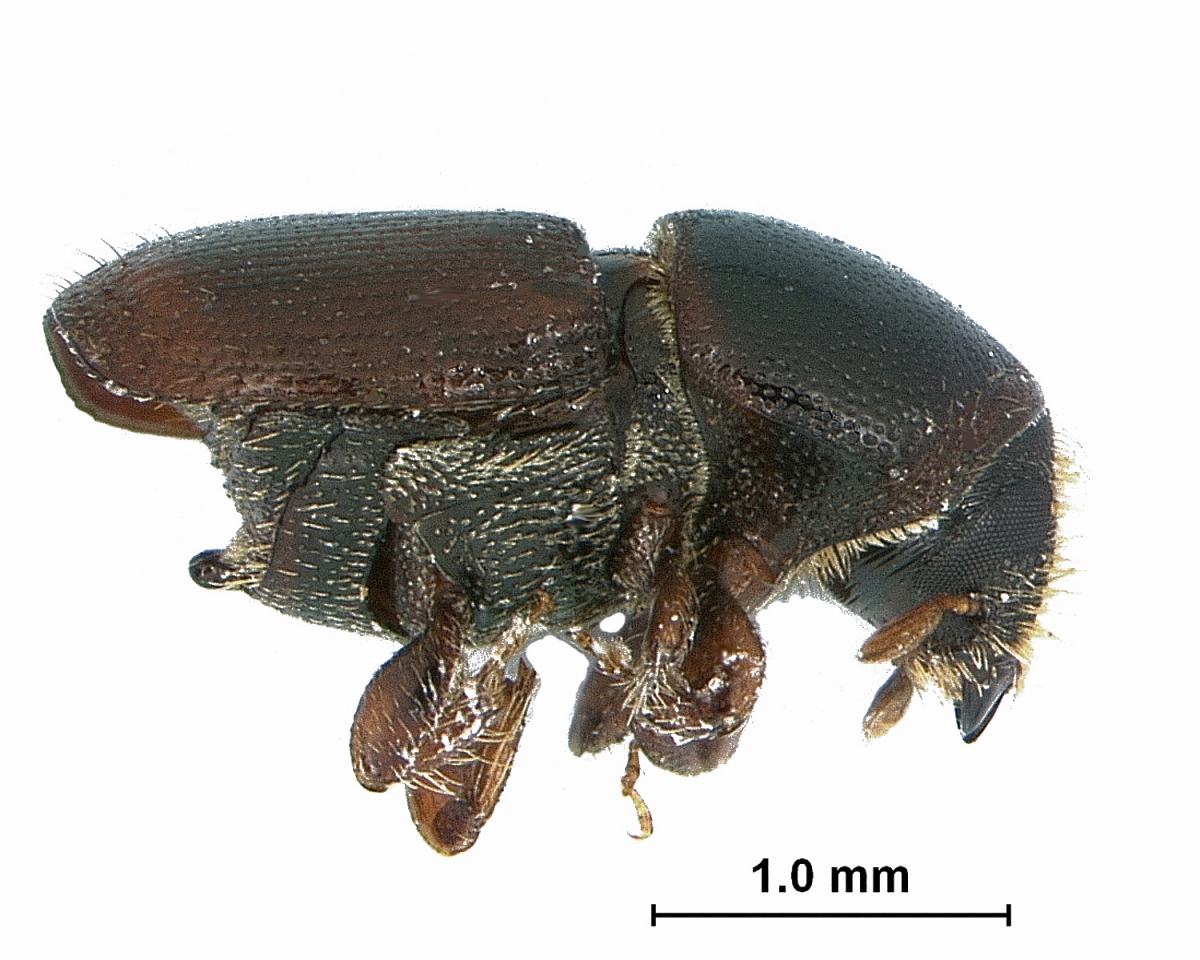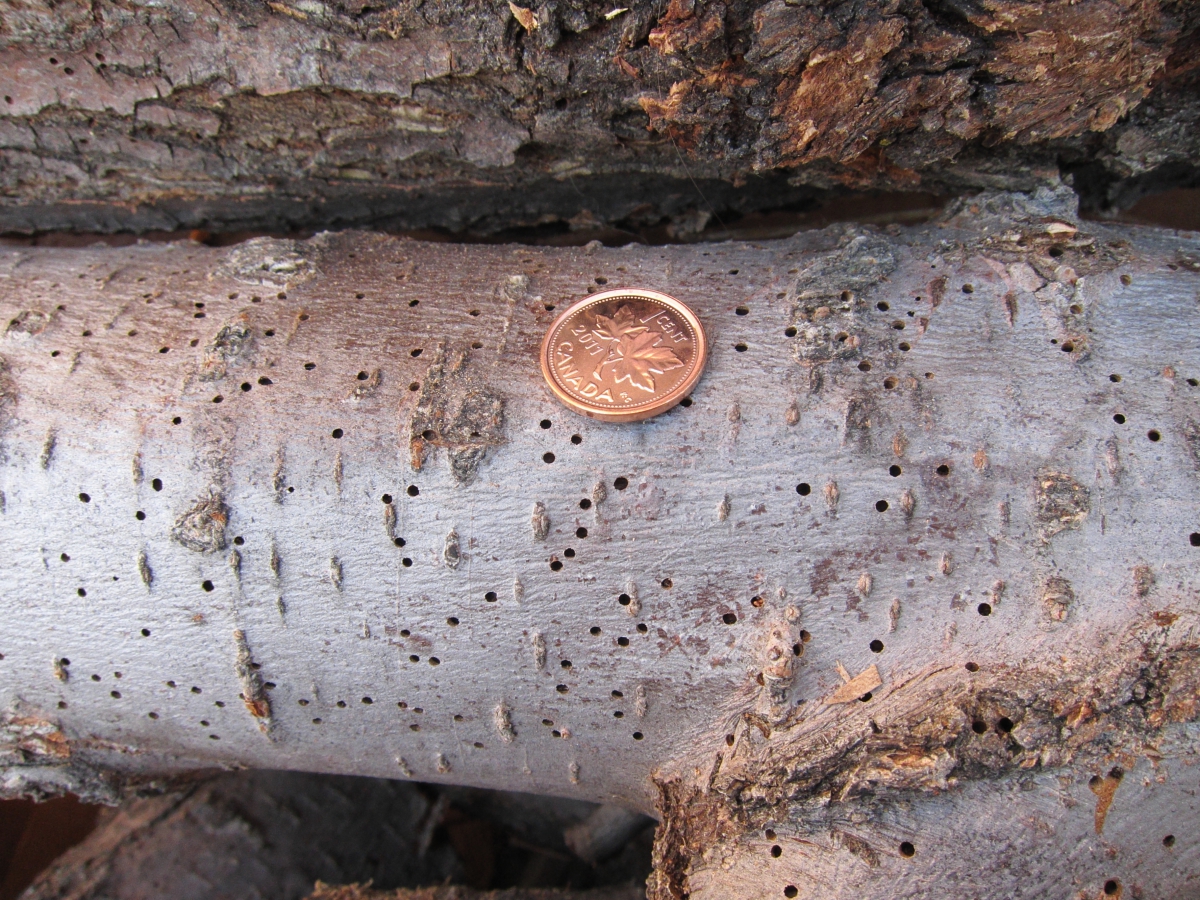Entomystery – why did the beetles go to camp?
Published
Categories
Blog Post
Occasionally, I put on my entomological detective hat to investigate insect mysteries. This one was a beetle mystery at my son’s camp in a Toronto elementary school. My son reported a large number (hundreds!) of tiny beetles swarming the windows in his classroom and asked me to look at them.

Antonia takes a closer look at the mystery beetle while solving the case of the unwelcome summer camp critters. Photo B Boyle.
Last week, I put on my entomological detective hat to investigate a beetle mystery at my son’s camp in a Toronto elementary school.
My son reported a large number (hundreds!) of tiny beetles swarming the windows in his classroom and asked me to look at them. I dutifully collected a few specimens. I commented to him that there are a number of different beetles that feed on grains and might be found in an indoor building where food is kept. It could be one of those.
Using a microscope, identification keys, species descriptions and the ROM collection, I was able to positively identify the unknown beetles as: Scolytus multistriatus or the Smaller European Elm bark beetle. This identification surprised me since bark beetles feed on the inside of tree bark and there were hundreds of them INSIDE the room, not outside where you would expect to find these beetles. So my initial assumption was incorrect, these were definitely not food pests!
The adult Smaller European bark beetles are very small, approximately 2-3 mm long.

Smaller European bark beetle; photo by Antonia Guidotti
The adults and larvae feed on all native and introduced species of elm as well as Japanese zelkova. These European natives were first recorded in North America in the early 1900s and are now found throughout Canada where elm trees grow. They are considered pests, not because of the feeding damage that the do (which is not fatal to the tree), but because they are carriers of the Dutch elm disease fungus (which will kill the tree). For more info on Dutch elm disease, see:
So why were there so many of these beetles in a classroom in a school? My first thought was to look for a tree outside near the windows but the source of the beetles was closer than that. Inside the classroom was a box of cut logs that were going to become woodworking projects this summer.
I examined them and found many exit holes and live beetles crawling about.

Exit holes; Photo by Antonia Guidotti
The logs were the source of the outbreak. Mystery solved!
In the end, the room did not require fumigation nor treatment since the insects posed no risk to people, food or the school. Removal of the food source (and a thorough cleaning) removed the problem. The camp saved a few dollars; and the environment did not have any additional chemicals added to it.
The message from today’s tale: before you spray, find out what your ‘pest’ is. Sometimes all you need to do is remove the food source and your problem will disappear!
For more information on bark beetles, see:


